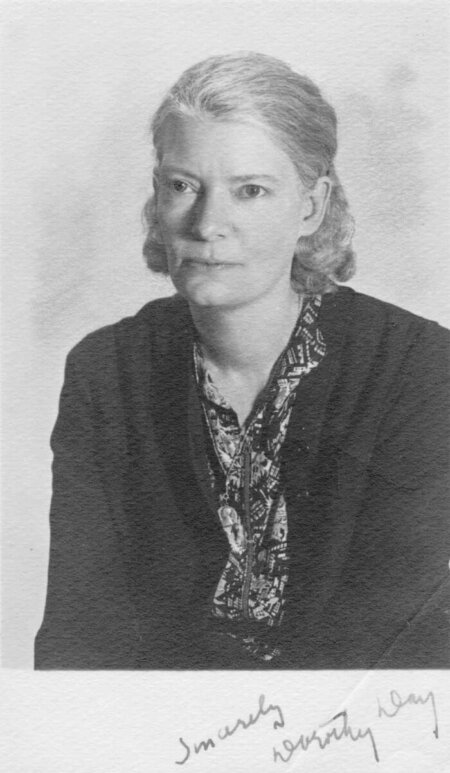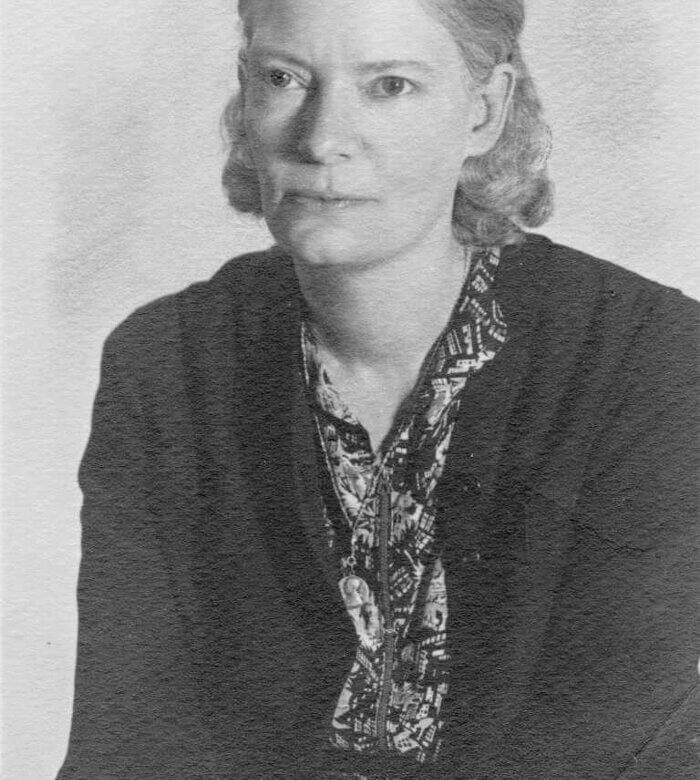The Frustrating, Inspiring Radicalism of Dorothy Day
by Tish Harrison Warren
Volume 35 Issue 7, 8 & 9 | Posted: October 4, 2021

I caught my friend Heath Carter, an associate professor at Princeton Theological Seminary, breathless. He’s training for a half marathon and picked up my call just after a sprint. I asked if I could talk to him about a hero of mine, the Catholic social activist Dorothy Day, and her involvement with the labor movement. Soon, Heath was another kind of breathless, absorbed, as good professors get, in the complexities presented to us by this remarkable woman, her witness, her contradictions, the controversies and passions of her life.
Heath teaches on Dorothy Day regularly in his courses. “Everywhere I’ve taught,” he says, “she frustrates my students.”
People want to know how to solve huge social problems. They want clear answers that fit neatly within our prefabricated ideological contexts. But Day was bearing witness to a different kingdom, a different way of being in the world.
The reason I had questions for Heath — and why I’m drawn to Day’s work — is that she explodes modern political boxes and assumptions. But Day is not a “moderate.” Instead, she was radical in ways that did not fit within the ideological battle lines of her own time or in ours.
Day was born in Brooklyn in 1897 to a conservative family. As she learned about the history of labor and oppression as a young adult, she became politically radicalized, working for Socialist newspapers before converting to Catholicism when she was 30.
She was committed to the dignity of the worker and appalled at the materialism and greed of unbridled capitalism. Heath told me that Day felt that the “maldistribution of wealth was a shocking travesty and offense,” so much so that it was immoral for Christians to settle blissfully into complacent middle-class lives.
After her conversion, she sought to live out the Catholic faith radically. Together with her friend Peter Maurin, she founded The Catholic Worker newspaper in 1933. In its pages, she advocated for causes, examined Catholic social teaching and cast a vision for a more just world. Then she started a home in Manhattan committed to sharing a roof and hospitality with the poor, the mentally ill and the addicted.
She also joined in direct action with laborers again and again. Her most iconic photo shows her as an old woman in Cesar Chavez’s farmworker protests, sitting calmly, framed by the backs of armed police. She looks beatific and tough as nails at once.
She wrote in her diary, “Cesar Chavez’s union of Farm Workers has everything that belongs to a new social order, so my path was clear. I had come to picket where an injunction was prohibiting picketing, and I would spend my weeks in California in jail.”
But Day’s work with the labor movement can’t be understood as boilerplate social progressivism. She was at odds with parts of the labor movement that simply wanted higher wages and better conditions for workers, though she fought for both. She was after the spiritual and moral flourishing of workers, for the creation of what she called the “kind of society where it is easier for men to be good.”
She was, at root, devoted to the church. “She adored priests and believed in obedience” to the Roman Catholic Church, Heath says, “even as she was constantly wrangling with priests and bishops.”
She was also deeply skeptical of bureaucracy and increasing dependence on the state, which she sardonically referred to as “the Holy Mother State.” She opposed certain types of government welfare, including Social Security, and was skeptical of the New Deal. But whereas parts of the contemporary right balk at government programs because they oppose tax increases or have adopted a kind of bootstraps individualism, Day would reject acquisitive populist capitalism as immoral.
She was committed to personalism and subsidiarity, the beliefs that social problems must be dealt with at the most grass-roots, local level possible, with real human relationships always in view. She called on the church and society to love their neighbors — to pay attention to the human beings around them, especially the poor. At times, she voiced the conservative cry of “personal responsibility,” but not in the way many now understand that idea. She believed in the need for structural change to address systemic injustice. But she also thought we should never view poverty or the rights of workers as simply issues for the government to solve.
Instead, she wanted middle- and upper-class Americans to take personal responsibility for creating a world where the dignity of every human being is affirmed and embraced. She cast a vision in her 1963 book “Loaves and Fishes,” “It seems to me that in the future the family — the ideal family — will always try to care for one more. If every family that professed to follow Scriptural teaching, whether Jew, Protestant, or Catholic, were to do this, there would be no need for huge institutions, houses of dead storage where human beings waste away in loneliness and despair.”
In her lifetime, Day was called a Communist. She was called naïve. She was called a threat to the church. She was none of these things. She was a Christian who took the teachings of Jesus seriously and wanted Christians to live out this ethic in their daily lives. She ultimately saw dehumanization in any form as the enemy, which led her to notice deep connections between stances that are sometimes set at odds. She saw dehumanization at work in industrialists’ abuse of laborers; also in systems that produced abortion; also in militarization and war.
Day did not offer a comprehensive social program to solve all of society’s ills. Instead, she had a vision of self-sacrificial faithfulness, loving our neighbor, and trusting the mystery of God with the results. Toward the end of our call, Heath told me that through her life and copious writing, Day makes this point: “I don’t have the answers to solve everything. Be faithful today.” My life looks very different than Day’s did, but her witness continues to prod me out of the deep ruts in today’s political and ideological discourse. Her daily, radical faithfulness dares me to imagine a world made new.
by Tish Harrison Warren

